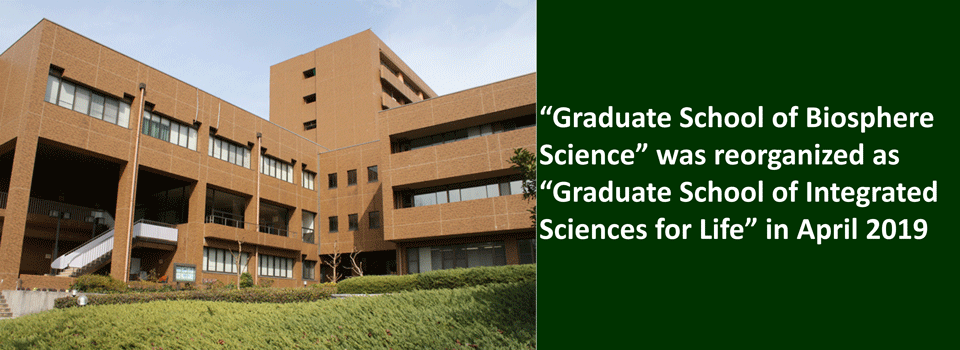|
“The 7th International Summer School in Biosphere Science” was held from 29 July to 4 August, 2014, aiming to share up-to-date scientific knowledge and techniques in the biosphere sciences with students and young academic staffs from MOU universities of our graduate school.
This year, a total of 11 students or young academic staffs joined from Pukyong National University (South Korea), Tunghai University (Taiwan), Airlangga University (Indonesia), Gadjah Mada University (Indonesia), Kasetsart University (Thailand) and Visayas State University (Philippines). On the first day, July 29, a welcome ceremony was conducted.
|
|
 |
 |
 |
 |
| Welcome Ceremony | |
| In the afternoon,they visited rural communities and agriculture farms in Kochi-town and observed the so called “sixth industry”, a new industrial trend in Japanese farming systems, in which farmers participate not only in producing agricultural products but also in processing and marketing. |
|
|
For the following two days, they selected and joined one of the scientific program works (Advanced Histology Program, Nutritional Biochemistry and Functional Food Factors Program, Food Preservation Technology Program, Bioactive Compounds in Seaweeds Program), learning and experiencing cutting-edge knowledge and techniques in related scientific fields with the help of Japanese student assistants.
|
|
 |
 |
|
Advanced Histology Program
|
|
 |
 |
|
Nutritional Biochemistry and Functional Food Factors Program
|
|
 |
 |
|
Food Preservation Technology Program
|
|
 |
 |
|
Bioactive Compounds in Seaweeds Program
|
|
|
On August 1, a study tour to two UNESCO world heritage sites (Atomic-bomb dome in Hiroshima Peace Memorial Park and Itsukushima shrine in Miyajima Island) was conducted to learn about Hiroshima’s elegant and tough history.
|
|
 |
 |
| Hiroshima Peace Memorial Park | Peace Memorial Museum |
 |
 |
| Visiting Miyajima Island by ferry boat | |
 |
 |
| Itsukushima Shrine in Miyajima | |
|
Study tours to private companies were also conducted. They visited Aohata Corporation in Takehara City and Stake Corporation in Higashi-Hiroshima City and observed the most advanced technology for their production.
|
|
 |
 |
 |
 |
|
Study tour to Aohata Corporation and jam making experience
|
|
 |
 |
 |
 |
| Study tour to Stake Corporation | |
|
On the final day, a panel discussion was organized in a large room divided into four clusters, and in each cluster the participants enjoyed discussing their scientific topics with other students (about 20 Japanese and International students) of our graduate school.
|
|
 |
 |
 |
 |
| Panel Discussion | |
|
In the afternoon, a farewell ceremony was conducted, and a certification was handed by the Dean.
Finally, the summer school was closed by the Farewell Party at the modern university cafeteria. |
|
 |
 |
| Farewell Ceremony | |
 |
 |
| Farewell Party at the university cafeteria | |
 |
 |
| Participants tried on Japanese "Yukata" | |
 |
 |
| Farewell Party | Participants leaving from Hiroshima Airport |
The 7th International Summer School in Biosphere Science was organized
Date : 2014/08/19
Copyright © 2003- Hiroshima University


 Home
Home
